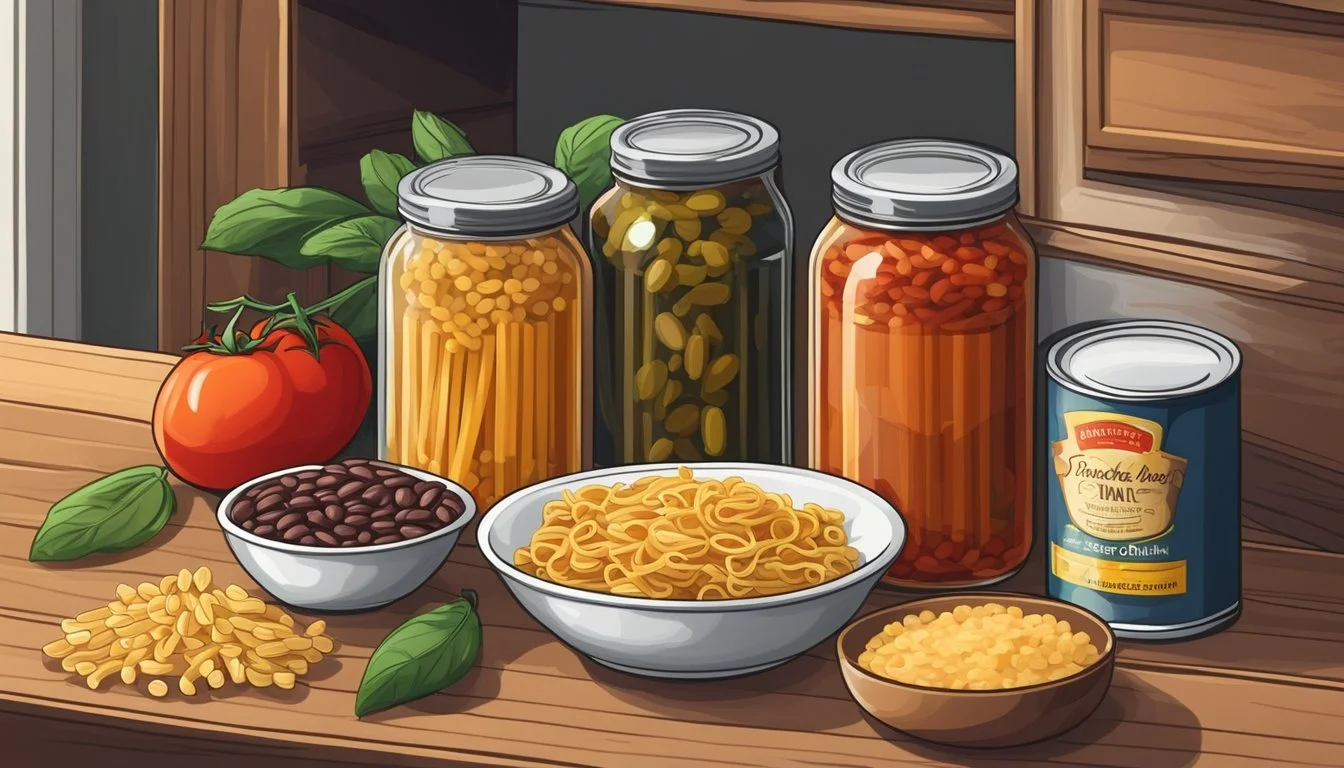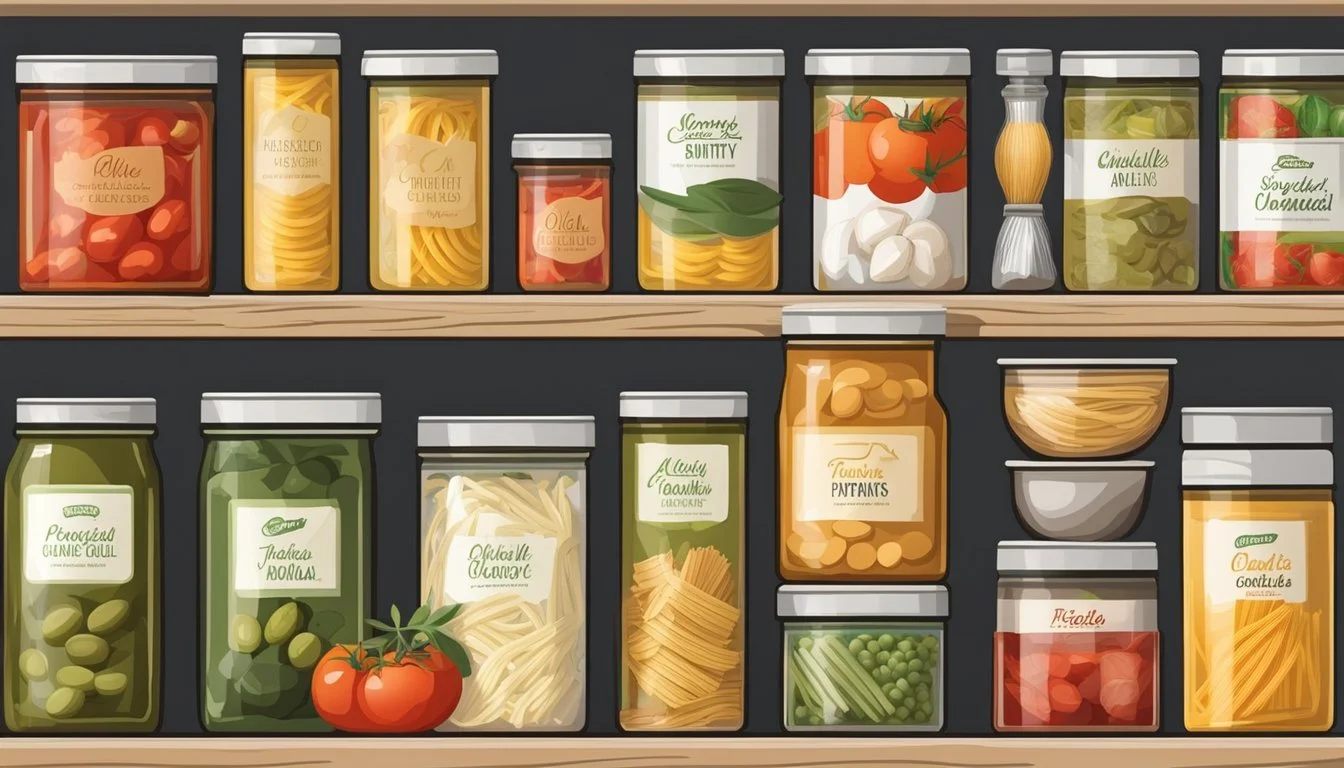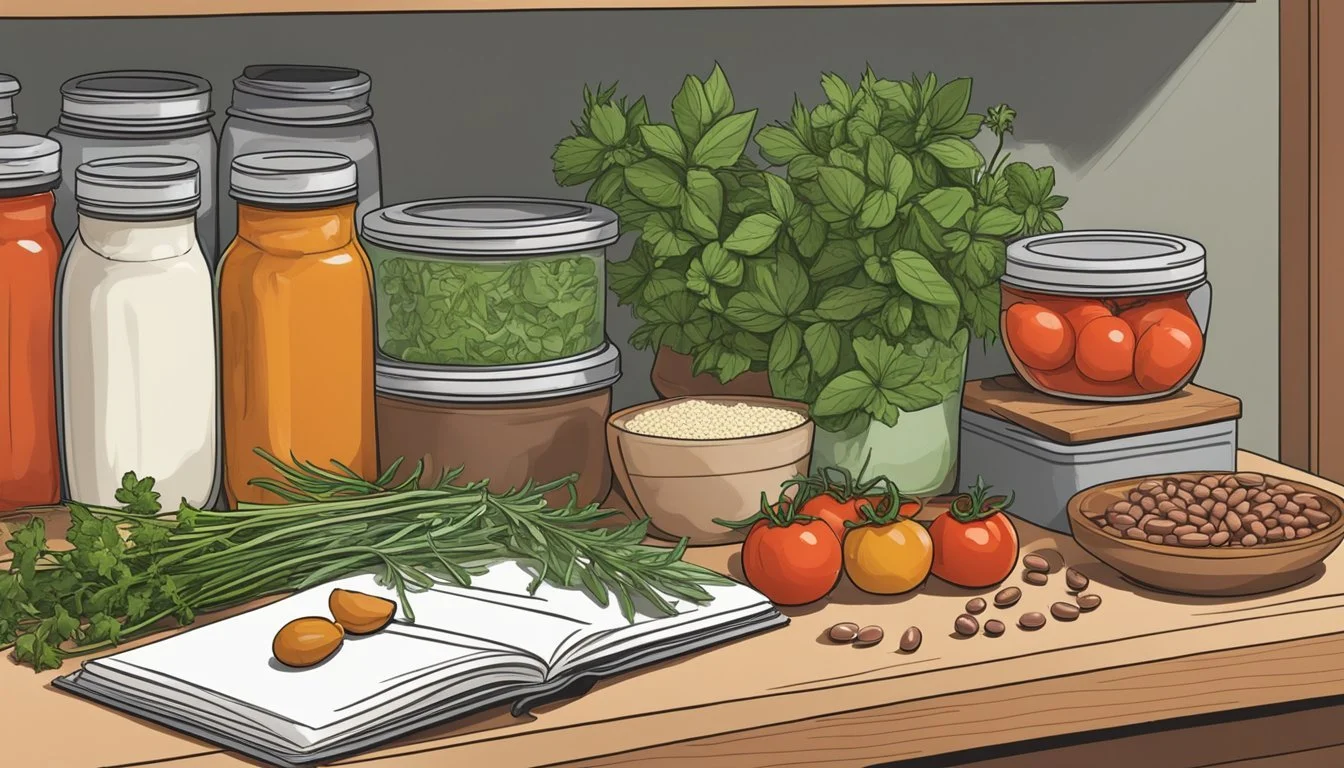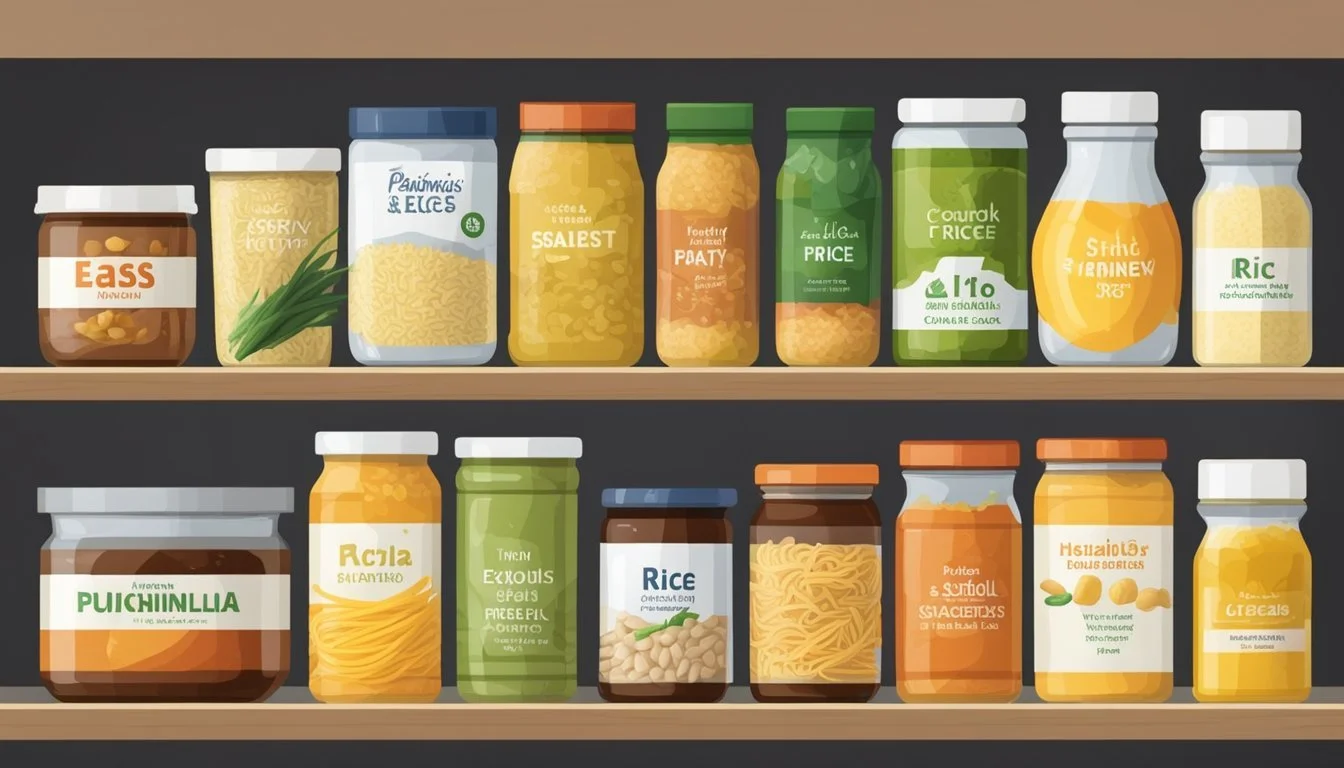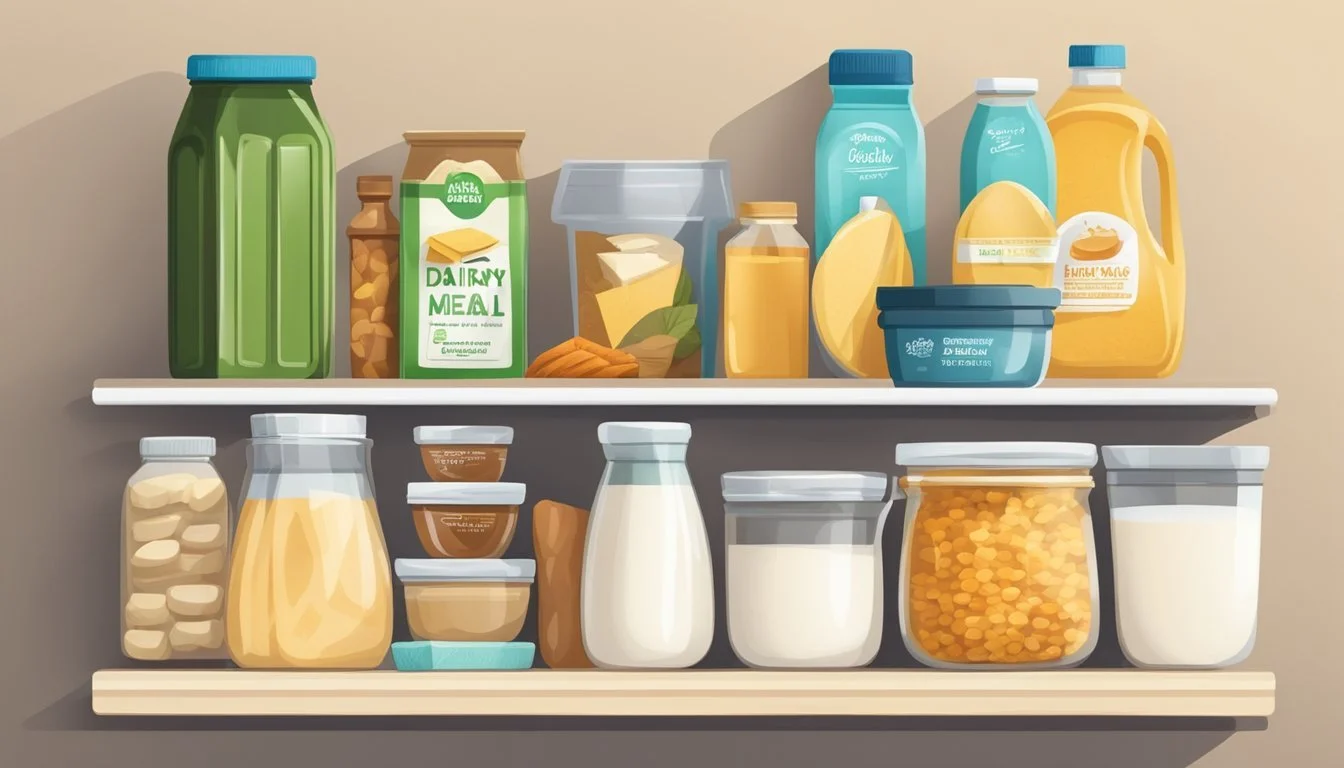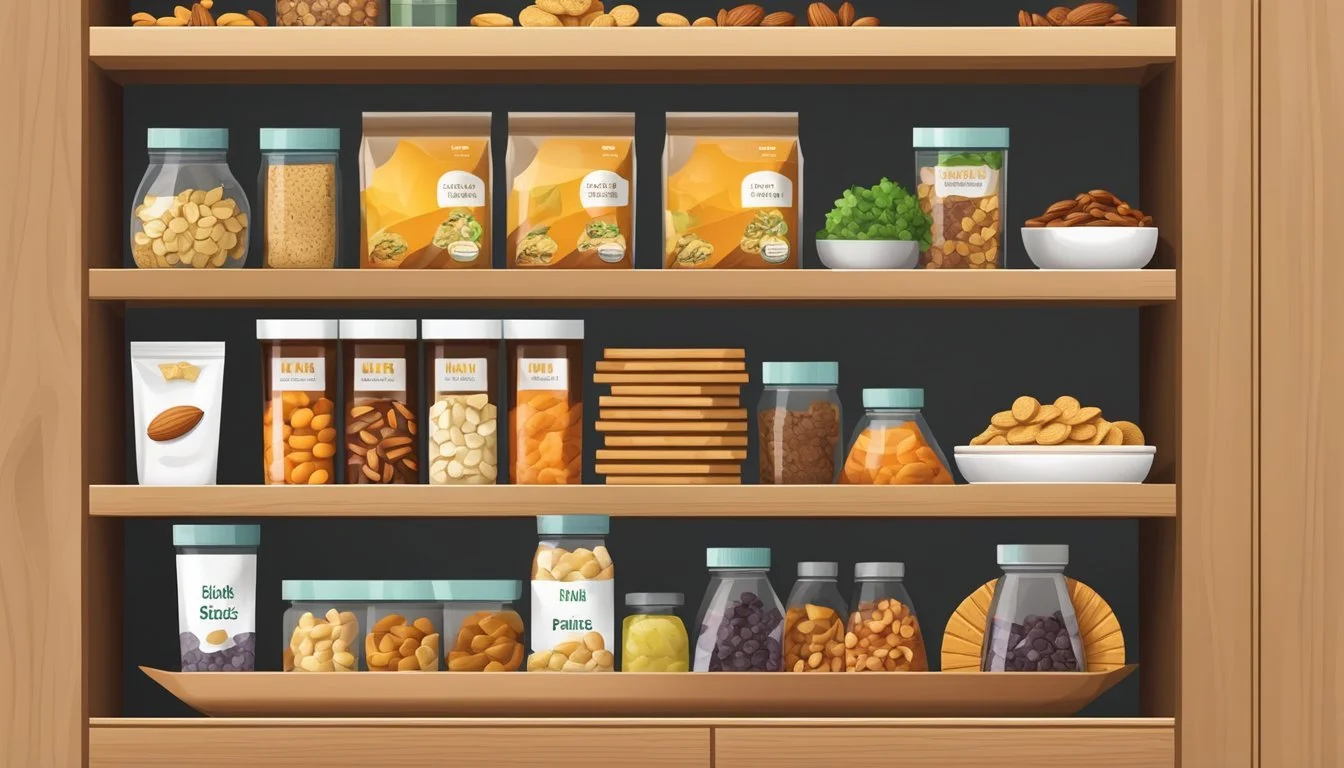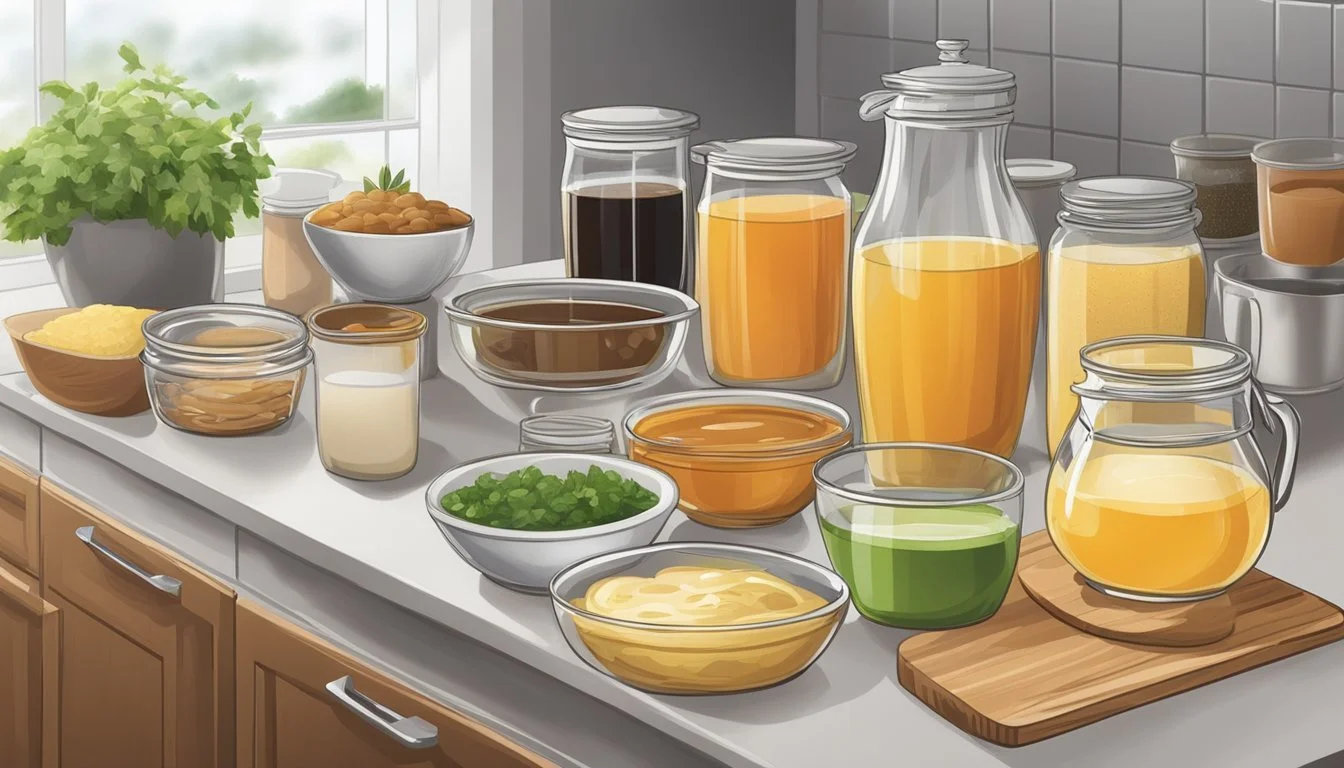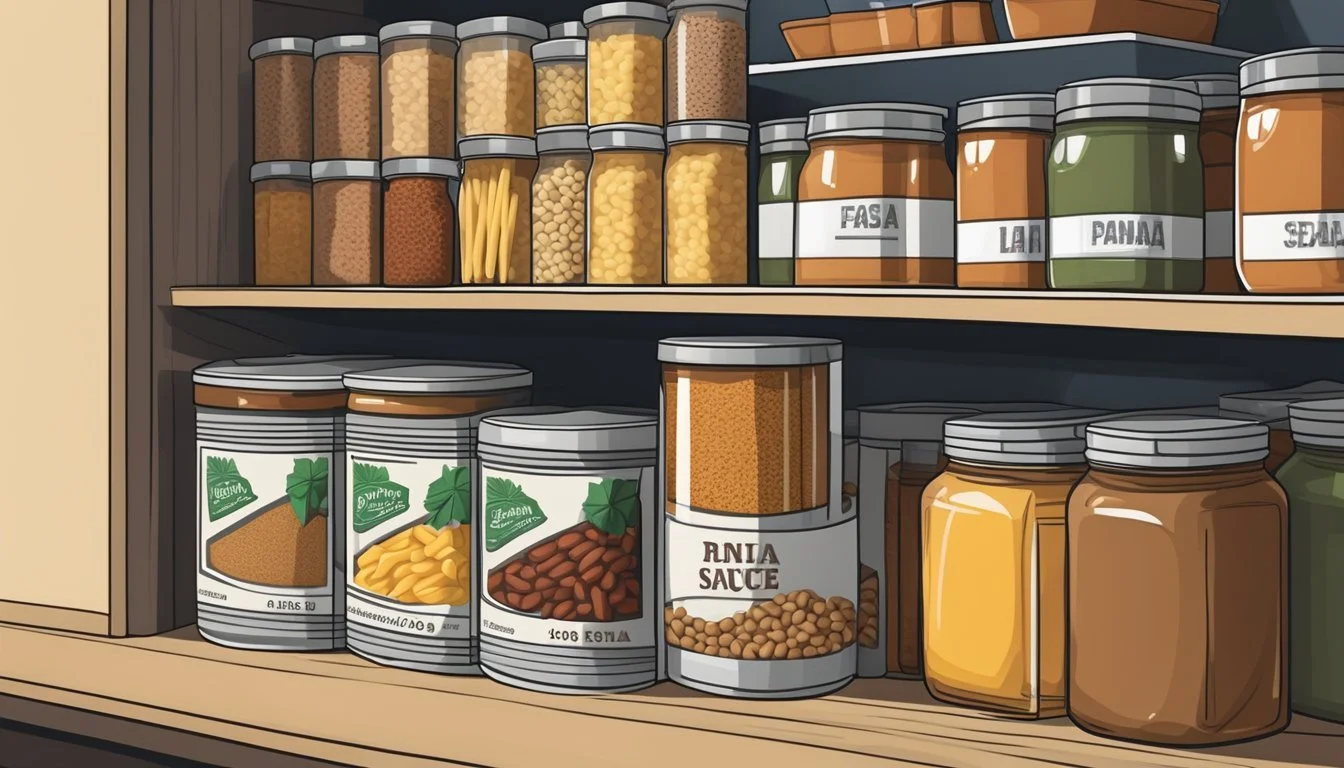Shelf-Stable Ingredient Pairings for Easy Meals
Quick and Delicious Combinations
In the world of home cooking, the ability to whip up a satisfying meal on short notice is a valued skill. It often hinges on a well-stocked pantry filled with shelf-stable ingredients, which are the unsung heroes of the kitchen. These staples, ranging from grains and pasta (What wine goes well with pasta?) to canned vegetables and beans, are not only budget-friendly but also offer an array of meal possibilities. Their longevity and versatility mean that even when fresh produce is scarce, one can still create nutritious and flavorful dishes.
Crafting meals with shelf-stable ingredients does not have to equate to monotony. In fact, these ingredients provide an excellent foundation for culinary creativity. Pairing grains like rice with proteins such as canned beans or meats can result in hearty and wholesome dinners, while combining pasta with a variety of canned or dried sauces can yield a comforting and quick meal. With a selection of pantry staples on hand, one can easily assemble dishes that are both satisfying and diverse.
The knowledge of how to pair these ingredients effectively empowers cooks to navigate their kitchens with ease. One need not sacrifice flavor for convenience; even simple ingredients can be transformed into delightful meals with the right combinations and seasoning. From the simplicity of a cheeseburger pasta that utilizes dry pasta and canned tomatoes to the adaptability of a bean and rice burrito, these pairings showcase the potential that lies within the pantry. By mastering these ingredient combinations, any home cook can become adept at serving up effortless meals irrespective of the day's challenges.
Understanding Shelf-Stable Ingredients
Selecting the right combination of shelf-stable ingredients is essential for creating nutritious and satisfying meals with a long storage life. These ingredients are the building blocks of countless recipes and are prized for their longevity and versatility in the kitchen.
Defining Pantry Staples
Pantry staples refer to foods that have been processed to extend their shelf life, allowing them to be stored safely at room temperature for extended periods. They often serve as the backbone for meal preparation, especially when fresh produce is not available. The most commonly utilized staples include:
Grains: such as rice and oats, which provide essential carbohydrates and fiber.
Pasta: a varied category that includes everything from spaghetti to macaroni, offering a quick and satisfying base for meals.
Beans: both in dried and canned forms, beans are a great source of protein and can be used in a multitude of dishes.
Canned goods: encompassing vegetables, fruits, meats, and fish, which are preserved at their peak freshness.
Spices: which are vital for adding flavor and depth to dishes without the need for fresh herbs.
Oils: including olive and vegetable oil, critical for cooking and adding richness to food.
Other grains: such as quinoa, barley, and bulgur, which are appreciated for their nutritional benefits and ease of cooking.
Benefits of Shelf-Stable Foods
Shelf-stable foods provide several benefits that make them a staple in pantries around the world:
Longevity: They can be stored for months to years without spoiling, reducing food waste.
Convenience: Ready to use at a moment's notice, they require no additional preparation like washing or chopping.
Versatility: These ingredients can be mixed and matched to create a wide array of dishes, from simple soups to complex entrees.
Nutrition: Many shelf-stable items retain much of their nutritional value, making them a healthy option for meals.
Cost-Effectiveness: Typically less expensive than fresh ingredients, they offer economical meal solutions.
Emergency Preparedness: They are ideal for times of uncertainty when access to fresh food may be limited.
By incorporating these staples into meal planning, one can ensure a well-rounded diet that is both practical and includes a variety of essential nutrients.
Strategic Grocery Shopping
Making strategic choices at the grocery store involves creating a list focused on sustainability and selecting ingredients that offer versatility. These practices ensure one can save money and maintain a healthy diet.
Creating a Sustainable Grocery List
A sustainable grocery list prioritizes items that have a long shelf life and supports the preparation of multiple meals without the need for frequent shopping trips. It should include:
Canned goods: beans, vegetables, fruits
Grains: rice, pasta, quinoa
Proteins: canned or dried legumes, nuts, long-lasting dairy or alternative products
Spices: a selection to add flavor to various dishes
This approach minimizes waste and also ensures that there are always ingredients on hand to prepare a nutritious meal.
Selecting Versatile Ingredients
Versatile ingredients can be used in multiple recipes and are crucial for a well-stocked pantry. Shoppers should aim to select foods that:
Transform across cuisines, like rice, which can be used in dishes from stir-fries to casseroles.
Can be used in various meal types such as eggs, which are suitable for breakfast, lunch, or dinner.
Offer nutritional value to keep meals balanced, like frozen vegetables and canned meats packed without added sodium.
Choosing such ingredients allows for flexibility in meal planning and helps one to stay healthy while also being budget-conscious.
Building a Pantry Meal Plan
Crafting a meal plan centered around pantry staples ensures one can prepare nutritious and varied meals with ease. This approach not only maximizes the shelf-stable ingredients but also integrates leftovers effectively, reducing waste and saving time.
Foundations of Meal Planning
When creating a pantry-based meal plan, one must consider the balance of proteins, carbohydrates, and healthy fats using non-perishable items. Proteins can be sourced from cans of fish, beans, and lentils. Carbohydrates are found in rice, pasta, and quinoa. Healthy fats may come from nuts, seeds, and oils.
A sample week could include meals like:
Monday: Black bean and rice burritos
Tuesday: Chickpea hummus with vegetable crudités
Wednesday: Tuna (What wine goes well with tuna?) pasta salad with olive oil dressing
These choices provide a rotation of proteins and carbs while keeping meals interesting.
Incorporating Leftovers
Utilizing leftovers in a pantry meal plan is efficient and cost-effective. A chef could repurpose the remnants of a chickpea salad into a savory topping for baked sweet potatoes. Leftover rice from burritos might turn into a hearty fried rice with canned vegetables. Planning meals that allow components to be reused in different ways throughout the week is the key.
In practice, one might use the leftover rice from Monday in a rice casserole on Thursday, ensuring nothing goes to waste. By building versatility into the meal plan, leftovers become an asset rather than an afterthought.
Ingredient Pairings for Flavorful Meals
Optimizing shelf-stable ingredients to create flavorsome meals is essential for both practicality and enjoyment. By understanding how certain ingredients complement each other, one can unlock a plethora of culinary possibilities.
Grains and Their Complements
Grains serve as the backbone to many pantry-based meals, offering both sustenance and versatility. Pairing grains with the right complements turns a simple staple into a complex dish.
Rice: Enhances its flavor with aromatic onions and garlic, and for added richness, one may fold in some cheese.
Pasta: Combines excellently with herbs such as basil or oregano; nutty elements like nuts and seeds add texture.
Lentils: Benefit from a melding with cumin or coriander, topping with garlic for extra zest.
Proteins and Pairings
Shelf-stable proteins are a cornerstone of many dishes and can be amplified with appropriate pairings to deliver satisfying meals.
Canned Tuna: Pairs well with olive oil, lemon, and herbs; integrating it into salads or mixing with garlic for a hearty pasta dish.
Ground Beef: Complement it with bold spices, onions, and garlic for flavorful sauces or hearty chili.
Chicken: A versatile protein that works well with a variety of spices, seeds, or a rich cheese sauce.
Nuts and Seeds: Offer a boost of protein when added to grain dishes or sprinkled over salads for added crunch.
Quick and Easy Pantry Recipes
Crafting meals from shelf-stable items can be both fulfilling and delicious. This section shares recipes that transform everyday pantry staples into comforting soups, stews, pasta dishes, and hearty rice meals.
Simple Soups and Stews
For a hearty lentil soup, one simply needs lentils, a can of tomatoes, some broth or stock, and basic spices. Start by sautéing any available onions and garlic, then add in the lentils, canned tomatoes, and broth. Allow the mixture to simmer until the lentils are tender.
For those who enjoy a bit of heat, a classic chili can be made with canned beans, tomato sauce, stock, and chili powder. One can cook the beans with tomato sauce and stock, seasoning with chili powder, cumin, and any other preferred spices until the flavors meld.
Satisfying Pasta and Noodles
Quick pasta meals can be both comforting and filling. For a simple spaghetti meal, one needs only to boil spaghetti and top it with a sauce made from canned tomatoes, garlic, and olive oil, seasoned with salt, pepper, and dried herbs.
To elevate linguine, one can toss the cooked noodles with canned clams, garlic, olive oil, and a sprinkle of chili flakes, resulting in a flavorful dish that requires minimal effort and ingredients.
Effortless Rice Dishes
Fried rice can serve as a perfect base for a variety of ingredients. It typically combines cooked rice with soy sauce, frozen mixed vegetables, and any available protein such as eggs or canned meat. The ingredients are stir-fried until warmed through and slightly crisp.
A simple and nutritious beans and rice dish uses black beans or pinto beans, rice, and a mix of spices like cumin and chili powder. One can also add canned corn or tomatoes for additional flavor and texture.
For an unconventional twist, chili mac combines the ingredients of chili with cooked macaroni, providing a comforting dish that is both cost-effective and easy to assemble using pantry ingredients.
Maximizing Shelf-Stable Produce
Crafting well-balanced and flavorful meals becomes markedly easier when one knows how to efficiently use shelf-stable produce. Canned and dried vegetables, along with dried and frozen fruits, are valuable assets for long-lasting and nutritious options that reduce food waste.
Utilizing Canned and Dried Vegetables
Canned Vegetables: Canned vegetables are cooked and preserved, making them ready to use. They are ideal for soups, stews, and casseroles.
Canned Tomatoes: Offer a base for sauces and stews, while delivering tanginess and richness. They come diced, crushed, or as a smooth sauce.
Canned Beans: Provide protein and fiber. They come in many varieties, such as black beans, chickpeas, or kidney beans, and are versatile for salads, chilis, or as a meat substitute.
Canned Coconut Milk: Adds creaminess to curries and soups. It's also a non-dairy alternative, enriching the flavor profile of a dish.
Dried Vegetables: Dried vegetables like sundried tomatoes or dehydrated peas can be reconstituted and are potent in flavor.
To rehydrate, simply soak in warm water for a few minutes.
Can be added directly to dishes with high liquid content, like soups.
Including Dried and Frozen Fruits
Dried Fruit: They provide concentrated flavors and are ideal for snacking, baking, or adding a sweet element to savory dishes.
Examples include raisins, dried apricots, and dates.
Tip: To soften, soak them in liquid beforehand.
Frozen Fruits: Frozen fruits retain most of the nutrition of fresh fruits and are convenient.
Frozen Berries: Perfect for smoothies, compotes, or as oatmeal toppings.
Other Frozen Fruits: Like mangoes and peaches, work well in baked goods or as dessert components.
By learning to combine items like canned beans, tomatoes, and coconut milk, one can create hearty meals such as chili or coconut curry. Dried and frozen fruits provide versatility and a burst of sweetness that can enhance both sweet and savory dishes.
Creative Uses for Common Condiments
The right condiment not only complements a dish but can entirely transform it. This section focuses on the creative applications of sauces, spreads, herbs, and spices to elevate shelf-stable ingredients.
Transformative Sauces and Spreads
Olive Oil: A staple in kitchens, olive oil is versatile. Drizzle it over pasta with a sprinkle of salt and garlic for a simple yet elegant meal. Mix with balsamic vinegar, some mustard, and herbs to create an instant salad dressing.
Pesto: This rich sauce made from basil, pine nuts, Parmesan, garlic, and olive oil brings life to plain pasta, sandwiches, and even pizzas. Use it as a base on a pizza crust or stir into warm noodles for a flavorful dish.
Tomato Sauce & Marinara Sauce: These sauces serve as the foundation for countless meals.
Tomato Sauce: It can be seasoned with herbs and used for shakshuka, by poaching eggs right in the sauce.
Marinara Sauce: This is perfect for a quick dip for cheese sticks or can be the base for a meatball sub.
Flavor Enhancement with Herbs and Spices
Salt: The simplest and most essential seasoning, salt can enhance the natural flavors of any dish it graces. It is crucial in balancing and bringing out the taste in sauces and proteins.
Soy Sauce: This condiment adds a savory umami punch to dishes. It's especially useful in vegetarian cooking to add depth to stir-fries or marinades. Soy sauce can be combined with lime juice and garlic for an Asian-inspired dressing.
Lime Juice: It has the power to brighten dishes with its acidity.
Soy Sauce & Lime Juice: Combine for a tangy, savory marinade perfect for tofu or chicken.
Marinara Sauce & Lime Juice: Add an unexpected twist by incorporating lime to elevate the flavor profile.
Tips for Shelf-Stable Dairy and Alternatives
Shelf-stable dairy products and their alternatives offer versatility and convenience in meal preparation. They ensure that essential nutrients found in dairy are available even without refrigeration.
Cooking with Cheese and Butter
Shelf-stable cheese options like powdered cheese or shelf-stable processed cheese products can add flavor and richness to a variety of dishes. They are perfect for sprinkling over pasta or mixing into soups and sauces. For butter, clarified butter, also known as ghee, provides a longer shelf life due to the removal of milk solids, allowing it to be stored without refrigeration. Ghee is suitable for frying and sautéing, imparting a nutty flavor to dishes.
Cheese:
Shelf-stable cheese: Can be added to pasta or soups.
Storage tip: Keep in cool, dry place.
Butter:
Ghee (clarified butter): Ideal for frying with a nutty flavor.
Storage tip: Store at room temperature, away from direct heat.
Using Milk and Milk Substitutes
Shelf-stable milk comes in various forms including powdered and UHT (ultra-high temperature) processed milk which can be used just like fresh milk once opened. With coconut milk, both lite and regular varieties offer shelf-stable creaminess for cooking and baking. Nut milks such as almond or cashew, often found in aseptic packaging, provide dairy-free options that are perfect for vegan recipes or lactose-intolerant individuals. They can serve as a direct substitute for milk in most recipes.
Milk:
Powdered and UHT milk: Directly substitutes fresh milk in recipes.
Storage tip: Keep unopened packages in a cool, dry place.
Coconut Milk:
Types: Lite and regular for versatility in recipes.
Storage tip: Refrigerate after opening and use within a given period.
Nut Milk (almond, cashew, etc.):
Usage: Can replace milk in recipes.
Storage tip: Store unopened cartons away from sunlight and heat.
Incorporating these shelf-stable dairy and dairy alternatives into meal planning ensures that key ingredients are always on hand, ready to enhance the flavor and nutritional profile of various dishes.
Snacks and Quick Bites
In a world where time is precious, shelf-stable snacks provide convenience and simplicity. These quick bites are designed to satisfy hunger promptly and offer a range of health benefits, fitting seamlessly into busy lifestyles.
Healthy Snacking Options
For those mindful of nutrition, chia seeds offer a powerhouse of fiber, protein, and calcium. They can be combined with honey and milk to create a satisfying snack. Additionally, shelf-stable options like cereal, rich in vitamins and minerals, make for a quick and nutritious start to the day or a light snack. Granola bars are another excellent choice, offering a blend of grains, nuts, and fruits, delivering energy and nutrients in a convenient package.
High-Fiber Cereal: Serve with a choice of milk or milk alternative.
Chia Seed Pudding: Mix chia seeds with milk and honey, top with fruit.
Granola Bars: Ideal for on-the-go nutrition.
Quick Fixes for Hunger Pangs
When hunger strikes abruptly, one needs options that are both quick and satisfying. Crackers paired with hard cheese or tuna salad packs can serve as a hearty snack without the need for refrigeration. Also, portable and filling, they can serve as a mini meal. For a sweeter touch, fruit roll-ups or dried fruit offer a shelf-stable fruit option that can curb those sugar cravings in a more health-conscious way.
Cheese and Crackers: Combine with vacuum-sealed tuna for added protein.
Sweet Treats: Opt for fruit roll-ups or dried fruits for a natural sugar fix.
By keeping these snacks and quick bites on hand, one ensures that they are prepared to tackle hunger with healthy, convenient options that do not compromise on taste or nutrition.
Utilizing Beverages and Broths
Beverages and broths offer a wealth of opportunities in the kitchen, from flavor enhancement to forming the base of various dishes.
Innovative Cooking with Stocks and Broths
Stocks and broths are indispensable pantry staples; they form the foundation for many recipes, imparting deep flavors and rich aromas. Chicken or vegetable stock serves as an excellent base for soups and stews, whereas beef stock is ideal for hearty gravies and stews. One can elevate rice dishes by replacing water with vegetable broth for an infusion of flavor. When incorporating stocks and broths:
Always choose low-sodium options to control the salt levels in dishes.
For a richer taste, consider reducing the broth on a simmer to concentrate the flavors before adding to recipes.
Beverage Uses Beyond Drinking
Beyond quenching thirst, beverages like tea and coffee can be used creatively in cooking:
Tea: A brewed black or green tea can serve as a poaching liquid for fish or chicken, imbuing subtle flavors. It can be used in marinades as well.
| Tea Type | Suggested Pairing |
|--------------|------------------------|
| Black Tea | Dark Meat Marinades |
| Green Tea | Light Fish Poaching |Coffee: Strong brewed coffee adds depth to chili or chocolate-based desserts. It can also be incorporated into a dry rub for beef or pork to enhance the richness of the meat.
Water is essential in cooking but can be swapped out with stocks or infusions of tea and coffee to transform everyday recipes into more flavorful creations.
Conclusion
Creating meals with shelf-stable ingredients can be both easy and nutritious. These pantry staples often offer versatility and a long shelf life, making meal prep a simpler task for those with busy schedules. Individuals can rely on a combination of grains, canned proteins, and vegetables to prepare meals that do not compromise on taste or nutritional value.
Shelf-stable ingredients can be mixed and matched to craft numerous easy pantry recipes. For instance, canned chickpeas add protein to stews and salads, while rice can serve as a base for a hearty stir-fry. Tuna, another pantry must-have, is perfect for making quick enchiladas or complementing a dish of shelf-stable gnocchi and mushrooms.
Here is a concise list of pairing ideas:
Grains and Legumes: Rice with canned beans or lentils.
Pasta and Sauces: Whole-wheat spaghetti with jarred marinara sauce.
Proteins and Vegetables: Tuna with canned tomatoes or frozen veggies.
These simple combinations ensure that a satisfying meal is never out of reach. Moreover, the shelf stability of these ingredients allows for bulk purchasing which can be cost-effective and time-saving.
With the added benefit of reducing food waste, the utilization of pantry ingredients in daily cooking is a practice that promotes sustainability. It empowers home cooks to prepare meals confidently, with the assurance that a well-stocked pantry is the cornerstone of a resourceful and efficient kitchen.

